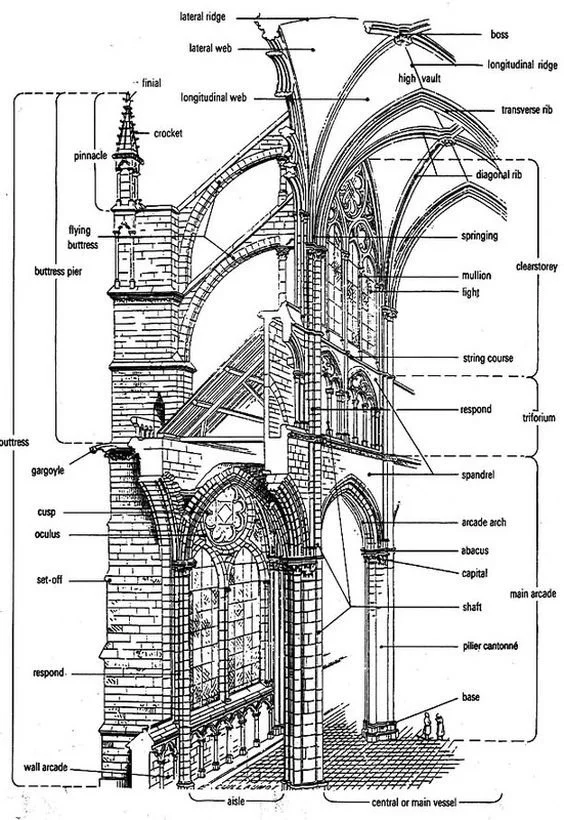10 Best Ways to Improve Architecture Design Skills
The world of architecture is a constantly developing industry that demands continuous innovation of design and technology.
As architects, there are several methods you can explore to develop your architectural skills, technical knowledge and ability.
In this insightful blog, you will learn the 10 Best Ways to Improve Architecture Design Skills by exploring various sources of inspiration, opportunities and design aids.
Understanding Architectural Principles
Successful designs are rooted in the principles of architecture. By understanding these principles you will be able to improve your architectural skills as they provide a foundation for your creativity and design thinking. Some key architectural principles include:
Balance: Achieving visual stability and equilibrium in your design.
Proportion: Ensuring harmony between different elements and scale.
Unity: Creating a sense of wholeness and cohesion in the design.
Rhythm: Lead the eye and body through space by establishing patterns.
Hierarchy: Organizing elements and materials to convey importance and structure.
1. Mastering Architectural Drawing Techniques
Being able to communicate your design ideas through sketching and drawing is a fundamental skill for all architects.
Whether you are sketching an initial architectural concept or drawing detailed technical plans, practising drawing techniques and using the correct tools can significantly improve your architecture design skills. Consider these drawing tips:
Use the correct types of pencils, pens, and markers to add depth and texture.
Sketch regularly to improve your skills and hand-eye coordination.
Become fluent in architectural software to improve your design and visual communication skills.
2. Embracing Computer Aided Design (CAD)
It is essential for all architects to have a deep understanding of CAD as it is an extremely powerful design and visualisation tool.
CAD allows architects to create detailed 3D models, enabling immersive visualisation, streamlined collaboration, and improved efficiency throughout the design process. Find out the 'Best CAD software for architects and architectural students' here.
3. Learning from Architectural History
Architecture is steeped in history, by gaining a knowledge of architectural history from different eras your architecture project can be informed by a variety of architectural styles and techniques.
Furthermore, by analysing iconic buildings and classical/contemporary architecture you will grow your understanding of architectural design. Allowing you to have a deeper pool of architectural skills and knowledge to draw from when designing your own projects.
4. Exploring Virtual Reality (VR) in Design
Virtual Reality is an extremely powerful visualisation tool which is particularly beneficial to communicating a design to clients. This is due to how immersive VR is as it allows a person to experience and walk through a space on a 1-1 scale. By experiencing spaces in real life scale you can better understand the proportions and spatial qualities of the design.
5. Utilising Parametric Design Techniques
Parametric design utilises mathematical algorithms to create complex arrangments and relationships between geometry that create adaptable and visually striking architectural forms.
Parametric design enables architects to explore multiple design iterations efficiently. By employing parametric design tools such as Rhino 3D, you can push the envelope of your architecture skills and creativity to develop innovative design. Read more on parametric design software here.
6. Keeping an Idea Sketchbook
Inspiration can strike at any moment, so make sure you capture those fleeting thoughts of creativity by always keeping a sketchbook (or several) to hand.
Jotting down your thoughts and observations through a sketch, a few lines of text, or a photograph can serve as a wellspring of ideas for future projects or solutions for current projects.
7. Taking Inspiration from Nature
The ultimate architect is Mother Nature, and much can be learned from her designs. Observe the efficient structures, geometric patterns, and sustainability present in the natural world. Incorporating biomimicry in your design process can lead to more aesthetically pleasing and eco-friendly design.
8. Enter Design Competitions
Architecture competitions often have unrestrictive briefs and allow for free-flowing thinking and creative design. Push yourself beyond your comfort zone and challenge your design skills. After all, it is all minutes counted toward improving your architecture skills
9. Understanding Sustainable Architecture Principles
Sustainable architecture is of the utmost importance in an era defined by environmental consciousness. Improve your architecture skills by investigating case studies and successful precedents of sustainable architecture to weave green building principles into your design concept.
Some sustainable design principles include; passive design, energy-efficient materials, and renewable energy. Learn more about utilising architectural precedent studies here.
10. Pursuing Further Education
Pursuing Further Education will deepen your knowledge and broaden your skill set. There are many avenues of education you can explore from advanced degrees and Ph.D.'s to online tutorials. However you pursue educating yourself, it is important to do so as architecture is constantly developing with new innovations and evolving technologies.
Conclusion
Becoming an exceptional architect is not a linear path, it requires a multifaceted approach to skill development.
By mastering fundamental design principles and harnessing the latest technology, aspirations and resources an architecture student or young architect can equip themselves with the right tools for an advantage when it comes to improving architecture design skills.
Embrace continuous learning, stay open to innovation and seek inspiration from multiple sources.
Remember, architecture is about creating memorable spaces, inspiring emotions, and standing the test of time not just about designing buildings.
FAQs
How long does it take to improve architecture design skills?
The journey to improving architectural design skills is an ongoing pursuit. It's a lifelong process that involves continual learning and experience.
What are some recommended online courses for architecture design?
There are several reputable online platforms that offer architectural courses, such as Udemy, Coursera and SkillShare. Before committing to a course make sure you read reviews.
Is sketching still relevant in the digital age of architecture?
Sketching is still an extremely important skill for an architect to possess. As sketching to a key communication tool during the conceptual stage of the design process. It is also an excellent way to learn architecture language and spatial qualities.














